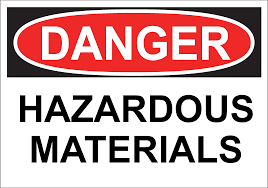

Home // Top 10 Chemicals Threatening Your Health Right Now

The United State’s new chemical safety law is giving the Environmental Protection Agency more authority to regulate dangerous chemicals. The new requirements under the Frank R. Lautenberg Chemical Safety for the 21st Century Act will for the first time require EPA to review existing chemicals. And there are a lot of them. About 80,000 to be exact. So where should EPA start? One well-known public health advocate actually created a list, identifying the top 10 chemicals threatening your health right now.
The compounds on the list, Environmental Working Group (EWG) says, are the top 10 high-priority chemicals EPA should act on quickly. In fact, EWG says the new chemical safety law is providing an unprecedented opportunity to perform meaningful risk evaluations that could lead to regulations that actually protect Americans from the worst chemicals.
This is especially important because everyday chemicals found in things like detergents, shampoos, soaps, furniture and clothing are linked to birth defects, cancer, thyroid disease and all sorts of health problems.
They considered each chemical’s health risks, how widely Americans are exposed to it and the likelihood of EPA action under the new law. Here are the 10 chemicals EWG urges the EPA to thoroughly review and regulate as soon as possible:
These is no safe level of exposure when it comes to this bad-news substance. And while most people think it’s been strictly banned since the 1980s, that’s not completely true. According to EWG, “U.S. industry still imports, uses and sells asbestos and asbestos products, including automobile brake pads and clutches, vinyl tile and roofing materials.”
Vinyl flooring also contains toxic phthalates, so it’s best to avoid safer choices like Forest Stewardship Certified hardwood, cork or real linoleum. If you are removing vinyl flooring, take steps to do so safety.
The International Agency for Research on Cancer (IARC) has designated perchloroethylene, or PERC, as a “probable human carcinogen.” It can be found in dry-cleaning fluid, spot removers and water repellents.
These chemicals are linked to early puberty in girls and other reproductive harms. Early puberty goes on to raise a women’s risk of breast cancer when she grows up. These trouble phthalate chemicals show up in PVC plastic, toys, nail polish, plastic wrap and fake fragrances.
BPA toxic effects are far reaching. This carcinogen is linked to infertility, developmental risks and diabetes. BPA is used in food cans and other food containers, as well as cash register receipts. But get this. EWG scoured industry documents and found it’s even turning up in coffee tin containers.
These chemicals turn up in upholstered furniture, foam cushions, baby car seats and insulation. They are linked to possible nerve and brain damage.

This potential carcinogen and endocrine disruptor is seen in electronics, auto parts and appliances.
These chemicals are linked to developmental toxicity, and appear in polyurethane foam for furniture, mattresses and baby products.
This probable carcinogen is used in aerosol cleaners and adhesives, and is linked to reproductive harm.
This probable carcinogen is found in plastic wrap and PVC plastic. It is also linked to developmental toxicity.
This probable carcinogen is detected in mothballs and deodorant blocks. It is linked to liver and nerve damage.
Because we aren’t thinking of needed precautions when purchasing and using items, our bodies can become a testing site for toxicity.
Today, we know many of the 80,000 chemicals are tragically toxic. The new requirements under the Frank R. Lautenberg Chemical Safety for the 21st Century Act now require the EPA perform reviews and risk assessments on chemicals. This opens the door for regulations that could actually protect us and future generations. Environmental Working Group released a list of the top 10 compounds it believe EPA should review first, based on toxicity and how many Americans are impacted by these chemicals each day.
Being mindful of toxins and reading labels before purchasing or using everyday items and avoiding all the items on this list can lead to a healthier and longer life.